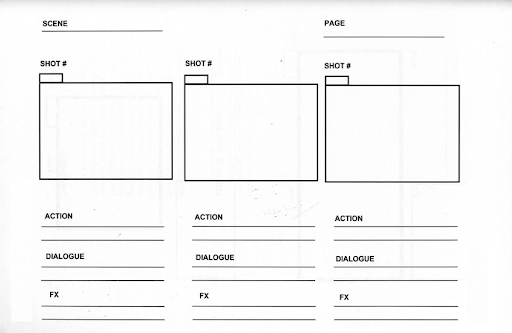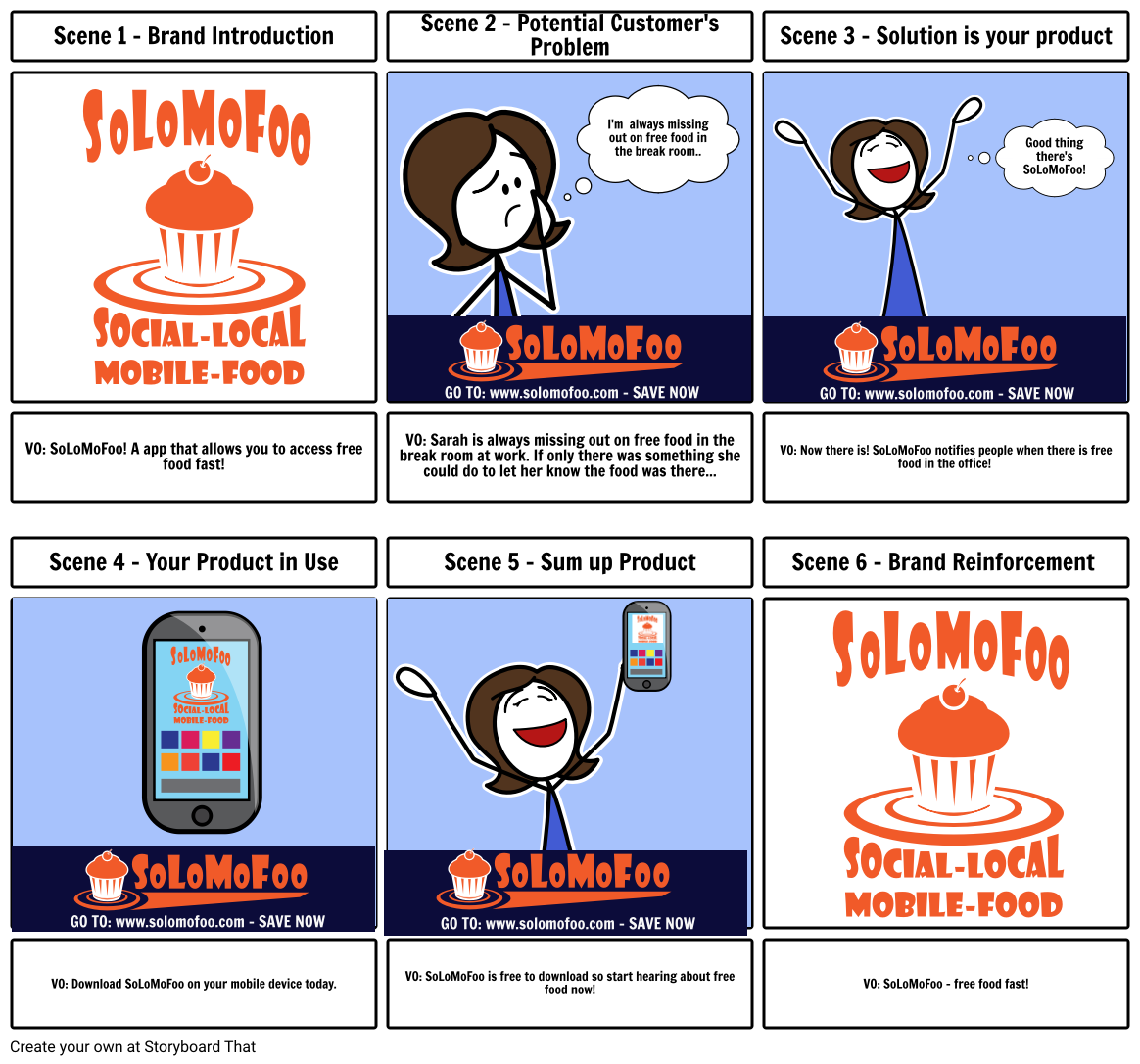From high-budget Hollywood productions to a simple TikTok video, videos are often created in multiple takes. Different shots are edited together to create a masterpiece.
But, how are these different shots pieced together? How do you glue them together to make the entire clip seem, well, seamless?
By using video transitions.
In this article, we’ll discuss some go-to effective transitions with examples so you can implement them in your next marketing clip!
9 cool video transitions you should try out
If your goal is to create better videos in 2021 and beyond, you need to embrace and experiment with transitions.
Here’s a list of all the awesome transitions you can try right away—let’s learn more about them.
1. Fade effects
The most basic of transitions, fade in and fade out transitions are when a scene gradually and subtly turns a single colour or blends into the next scene.
You’ve probably seen this transition most during movie trailers, when they’re trying to quickly show multiple shots from the movie in a super-short teaser.
Fade in transition is usually used at the start to set the scene, while fade outs are used at the end of the scene or when the clip ends. Fades do add a little bit more drama between clips, so know that that’s the kind of effect it may have on your video.
There are 3 different kinds of fade transitions:
a) Fade to black
This is when your video scene fades to a black screen. This is usually used when the video has a darker colour palette—it looks more cohesive with the video and sets a dramatic mood.
b) Fade to white
This is when your video scene fades to white or from white. This transition goes really well with videos that have lighter and softer colour palettes, and when you’re trying to set a calmer, more relaxing mood.
c) Fade to another colour or the next scene
Several times you’ll see the scene fading to either black or white, but the scene that comes next or another background/brand colour.
The next example of a transition, and one of the most commonly-used ones, is zoom.
2. Zoom In and Zoom Out
(0:01 to 0:12)
Whether you’re trying to add some motion to your static images (works excellent when you’d like to add a little life to your business videos), or need a clean, smooth transition, a good zoom moment works great.
Zoom works especially well when you’re trying to create a product feature video, a product introduction, or a tutorial, as it allows you to zoom in on a particular part of the product you want to emphasize.
This example of a promotional video makes great use of Zoom In and Zoom Out transition at the beginning.
3. Slide Up, Slide Down, Slide Left, and Slide Right
(0:02 to 0:06)
The slide transition example is another great way to join two scenes together, especially ones that are in sync with each other.
It’s similar to a slideshow and starts or ends a scene by sliding up, sliding down, sliding left, or sliding right. Like in this example.
4. Swipe effects
Ever swiped pictures on Instagram?
This transition example works similarly to that and swipes the screen to display the next one. If you’re creating a video listicle, or a product video displaying multiple benefits or features of your video, this transition may become your best friend.
5. Wipe effects
Similar to slide and swipe transitions, a wipe effect is often used to replace one shot with the next by travelling from one side to another.
However, unlike the other two transitions, instead of signifying that the scene has ended, the wipe effects usually show that there’s more to follow. So, use the wipe effect if you want to leave your audience on a cliff-hanger.
6. Spin
(0:01 to 0:08)
This video transition example is super fun. A scene twists and spins and ushers in the next scene.
This example works especially well with round objects if you’re creating product videos, or scenic vlogs.
7. Blur
Blurring transition is used, like its name suggests, when one scene blurs into the next. It creates a calming, relaxing mood.
8. Iris In and Iris Out
Iris transition uses a circular motion, starting from the centre of the video and expanding out to either reveal or hide the entire screen. This motion is akin to pointing a spotlight at the centre of the screen and then coming closer till the light shines in all directions and envelops the screen.
It’s usually used in video listicles, to end one point and start the next.
9. Paint Brush effects
If you're looking for a fun and creative way to add transitions to your videos (and you don’t want to use the same-old ones), paint brush transition is your best bet.
It transitions one screen into the next via a few thick brush strokes.
It works especially well when you’re trying to transition into a completely different scene and looking to be very creative or playful.
So what exactly are video transitions?
Video transitions are used in post-production to seamlessly glue multiple shots together.
Whether you want to show a particular mood, jump between different scenes, or simply guide your audience from one scene to another in a more engaging way, video transitions can do it all.
And they’re not just for high budget Hollywood movies: they work equally well for your internal business videos, short marketing videos, animated videos, video tutorials, and so on.
So they’re basically used whenever you want to add a little oomph to your videos, give them a pro touch, and ensure that you’re giving viewers a storytelling experience through your videos.
Why use video transitions?
You know video transitions can make your video look cool, but are they absolutely necessary? Should you be taking the time to add them in your clips?
In today's video-first world, where over 400 hours of video are uploaded every minute on YouTube, absolutely.
1. Helps to stand out from the competition
Many businesses have jumped on the video marketing bandwagon and are creating one video after another because they know people love video content. After all, more than 500 million hours of videos are watched on YouTube each day.
With so many videos already floating in the digital sphere, how can you make your video stand out from the rest?
By experimenting with cool tips and tricks in post-production, like video transitions! The best video transitions add that extra-something to your videos, making them special and a little better than everybody else's videos.
2. Gives your video a high-quality touch
According to Buffer, 43% of marketers said they’d create more video content if there were no obstacles like time, resources, and budget.
If you’re one of them and you don’t have the crew, the time, or the money to make a high budget video for your brand, what do you do? How do you make your video pro-looking and high-quality without spending too much time or money on it?
By shooting a great video and intricately weaving different shots together via video transitions to amplify your project.

Add subtitles to your video!
Did you know that almost 80 % of videos are watched without sound? Whether you're in a noisy environment or forgot your earphones, there are plenty of reasons why people do not turn on the audio. Learn how to add subtitles to a video or discover a full list of animated text generators to adapt your videos to your user needs.
3. An excellent way to show emotions in your video
As Dr. Karen Nelson-Field aptly says in Viral Marketing: The Science of Sharing, “Videos that are affiliated with strong emotions have double the chances to be shared than the ones with a weak emotional appeal.”
This is where video transitions come into your project.
Using video transitions for your project expertly can easily elevate your storytelling and add that emotional factor to your video that might be missing otherwise.
Discover PlayPlay's video maker and easily add video transitions, audio, voice-over, subtitles, effects, music, and more to create captivating social media posts or content for your website. Benefit from some our latest AI tools such as creating an AI Avatar or creating a video from a URL.
How to successfully use video transitions
The best videos (with great use of transitions) require a bit more work than just putting two video clips side by side and adding a transition. It requires prior planning, excellent editing, and lots of experimenting with different types of transitions.
If you’ve just started working with video transitions, these tips and tricks will help you ace your videos.
1. Write a script and storyboard first
While a script and storyboard may seem like too much work initially (especially if you’re creating a short and snappy social media video), it goes a long way in ensuring that your final video is perfect.
A storyboard and script helps in organizing your thoughts, planning your video, collaborating easily with other stakeholders, and simplifying the entire process.
Even if a quick rough storyboard and a short script (with just main points) will do the trick, for shorter clips especially.
Here’s one of the best templates to use if you’ve never created storyboards before.
It’s crucial to know where each of your screens will end, where you'll need to add transitions, how your video will begin and how it’ll end.
2. Aim for simplicity
When starting with video transitions, it’s very easy to go overboard and try to use multiple video transitions, complex motions, and fancy effects in one short clip.
Don’t make this mistake.
You should take the time to make a professional video project that flows seamlessly.
Watch how this marketing video by Advidi sprinkles in just a few video transition effects throughout the video to make a bigger impact.
So for pro-looking clips, make sure you keep your transitions simple and effective—no need to go into complicated motion design to make an impact.
One wrong transition or motion design effect can make your video seem amateur or sloppy.
3. Use multiple transitions
Using a single video transition throughout your entire video project can easily make it seem boring and monotonous. There needs to be a little something extra to elevate your video project.
Experiment with multiple video transitions to create a storytelling experience, especially if you’re creating teasers or recap videos.
However, if there’s a purpose behind using one type of transition, then go ahead. It’s all about experimentation at the end of the day, and what works for your brand!
4. But don’t overdo the video transitions!
While using just one video transition can make your video boring, using all of them can easily make it chaotic.
While it works for some people, if you’re new to video editing and you don’t do it right, it can make your video seem unprofessional.
So choose two to three types of transitions, and stick to them throughout the video editing process. Keep the rest of your video free from any extra transitions that would overpack it.
And if you’re creating a series of clips, try to use similar video transitions in all of them to give a cohesive feel to your videos.
5. Choose the right video editor to create the best transitions
The quality of your output depends on how good your editing skills are and how awesome your editor is. Shoot a great clip, but do a mediocre job at editing it, and it’ll ruin all your hard work.
So the need to choose the right online video editor (that’s also easy to use!) for your brand clip is essential.
Create stunning video transitions with PlayPlay
This is where PlayPlay comes in like a knight in shining armour.
PlayPlay is an intuitive video creation platform, and the best solution if you’re looking to avoid the headache (and steep learning curve) of more complex software such as Adobe Premiere Pro, Final Cut Pro, or Windows Movie Maker.
With PlayPlay, not only are video effects easy to add to your videos, but you can apply the best formats for social media to your content in a click!
Start using PlayPlay’s free trial right away and make your videos awesome!

More reasons to love PlayPlay:
- Our AI Video Generator, which speeds up your video creation process! With this tool, you’ll be able to generate video first drafts from text prompts, so you don’t have to start from scratch. You can edit the draft to match your brand’s needs to ensure a high-quality final output.
- Our premium stock library, which gives you access to millions of high-quality, royalty-free media. Use premium images, clips, and GIFs from Getty to enhance them, make them more engaging, and heighten their pro look.
- Our multi-format resizing tool, where you can crop and resize your clips for each channel or social media platform. In just a few clicks, you can resize them into vertical, horizontal, or square modes without affecting the quality of your output.
The J-cut and L-cut are among the most commonly used transitions due to their flexibility. These effects are favored by filmmakers, TV shows, and many online content creators. To create these cuts, you'll need two clips with audio. In your editing software, simply unlink the audio from the clips to create this kind of cut.
Rotating transitions can flow seamlessly, especially when a live subject is involved. Track the main character as they walk in a shot, then maintain everything except the environment in the following shot for better effects.
A soft transition is a subtle change between different effects, such as a gradual change between colors, textures, or patterns. A soft transition avoids sudden contrasts, ensuring a smoother and more seamless progression.
Melissa Francois
Head of Global Content & Comms
With over 10 years of experience in the wild world of SaaS, Melissa cares about building great brand stories and driving community engagement through engaging content. Off the clock, she enjoys long walks and a pint in a cozy country pub.





